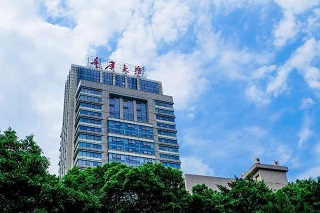【TITLE & POSITION】Professor, doctoral supervisor,
【ACADEMIC APPOINTMENTS】
Editorial Board of Frontiers in Physiology
Director of China Microcirculation Society,
Director of Hemorheology Committee of China Microcirculation Society,
Director of China Cell Biology Society,
Member of China Blood Substitutes Professional Committee,
Senior Member of China Biomedical Engineering Society,
Executive Director of Chongqing Biomedical Engineering Society
Expert of National Natural Fund Project and Major R & D Project of Ministry of Science and Technology.
Executive Director of Chongqing Blood Purification Engineering Center
【CONTACT INFORMATION】
E-mail: xwangchn@vip.sina.com or xwangchn@cqu.edu.cn;
Website: http://xwangchnlab.cqu.edu.cn
【PERSONAL PROFILE】
Dr. Wang Xiang graduated from Chongqing University (Ph.D. in 1997 Engineering), After the completion of postdoctoral research at Military Medical University of the Army (1997-1999), he joined Chongqing University (2000-now) to carry out teaching and research work. During 2005-06, as a visiting scholar, he has researched on the difference of biomechanical characteristics of cells and the topological variation of membrane protein network at the University of California, San Diego. After returning to China, He has continued to study the structure and function of erythrocyte membrane protein.
Dr. Wang Xiang has presided 4 Projects supported National Natural Science Foundation of China (NSFC), 2 Projects supported by Ministry of Science and Technology. He has Published more than 90 papers in "Carbohydrate Polymers"; "Journal of Biomechanics"; "Journal of Cellular Biochemistry" and other SCI journals and CSCD core journals and the published papers were cited 39 times; He also published 3 academic monographs and obtained 4 invention patents. He has Attended many international academic conferences such as "42 nd Federal of Europe Biochemistry Society Congress"、"8th World Congress of Biomechanics".
Current courses taught by Dr. Wang Xiang include Biophysics, Biophysics Research Methods and Experimental Technology, Biophysics Progress etc. He has supervised 52 master students and 42 Ph.D. students,
【RESEARCH INTERESTS】
Dr. Wang Xiang’s research field including: Cell biomechanics and Hemorheology, Blood tissue reconstruction and repair, Comparison of biologic rheology and new blood purification materials are as follows:
1. Red blood cell reconstruction: reconstructing the double disc-shaped artificial cells which cell morphology, mechanical properties and oxygen carrying capacity are similar close to natural red blood cells. The study is expected to be further developed as a blood substitute;
2. The kinetics theory of carrying-releasing oxygen of red blood cells and blood substitutes.
3. Comparative rheology: red blood cell deformability as a marker of species erythrocyte evolution
4. Study on blood purification materials and blood cardiopulmonary bypass therapy system;
【REPRESENTATIVE PUBLICATIONS】限5项
1. Dang, Qi; Li, Chun Gong; Jin, Xin Xin; Zhao, Ya Jin; Wang, Xiang*: Heparin as a molecular spacer immobilized on microspheres to improve blood compatibility in hemoperfusion;Carbohydrate Polymers, 2019, 205: 89-97. SCIE.
2. Yang, Qinqin; Noviana, Milody; Zhao, Yajin; Chen, Dong; Wang, Xiang*:Effect of curcumin extract against oxidative stress on both structure and deformation capability of red blood cell;Journal of Biomechanics, 2019, 95: 0-UNSP 109301. SCIE.
3. Zhao, Yajin; Wang, Xiang*; Wang, Ruofeng; Chen, Dong; Noviana, Milody; Zhu, Hongliang:Nitric oxide inhibits hypoxia-induced impairment of human RBC deformability through reducing the cross-linking of membrane protein band 3;Journal of Cellular Biochemistry, 2019, 120(1): 305-320. SCIE.
4. Fuzhou Tang; Xiang Wang* et al: Ankyrin exposure induced by activated protein kinase C plays a potential role in erythrophagocytosis; Biochimica et Biophysica Acta, 2016, 1860: 120-128. SCIE.
5. Tang, Fuzhou; Lei, Xiaofeng; Xiong, Yanlian; Wang, Ruofeng; Mao, Jinchun; Wang, Xiang*: Alteration Young's moduli by protein 4.1 phosphorylation play a potential role in the deformability development of vertebrate erythrocytes; Journal of Biomechanics, 2014, 47(13): 3400-3407. SCI.
